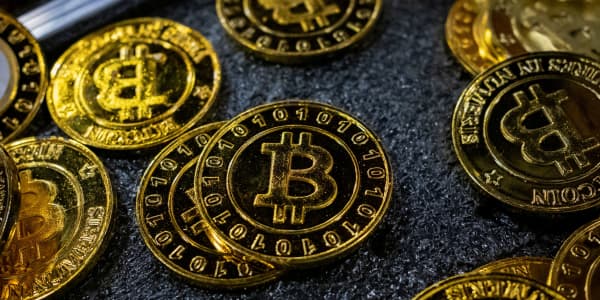The only type of fund growing at a faster clip than ETFs is ... ETFs of ETFs.
Professional money managers are packaging portfolios of ETFs to make active bets on the market — macro bets, country bets and tactical shifts into and out of sectors. At the end of 2013, there were 648 strategies that fit this definition, with $96 billion in assets, according to Morningstar data. These ETF funds of funds — at least 50 percent of the strategy needs to be invested in ETFs to meet Morningstar's definition — increased by 40 percent last year. By comparison, total U.S. ETF assets increased 26 percent last year.
Ben Johnson, director of passive funds research at Morningstar, doesn't necessarily recommend that the average Joe investor run out and open up an ETF strategist fund. "Not many of these strategists' habits can be easily replicated by typical investors, especially the larger and more tactical strategies," he said.
It's true that professional ETF strategists run complicated quantitative models the individual investor would be hard-pressed to match. However, there are some straightforward concepts the do-it-yourself investor can use to gain an edge using ETFs, investing ideas that dovetail with the current boom in packaged ETF solutions.
1. The right call isn't enough — you need to buy the right ETF.
ETFs allow investors of all stripes to make the kinds of bets that were once limited to single-stock pickers. But the same way a stock picker can call the right sector but pick the wrong company, you need to buy the right ETF, not just any ETF covering the right sector.
One of the most important steps in using ETFs to invest is to look under the hood, so to speak, and see what the ETF you own is invested in. "Investors should look at how each fund gets its exposure, because that can make a huge difference in performance," said Dave Nadig, chief investment officer at ETF.com.
Take Japan, an equity wager that recently paid off for investors, but to differing degrees based on the specific ETF used to place the bet. The db-X MSCI Japan Currency Hedged Fund (DBJP) and Wisdom Tree Japan Hedged Equity (DXJ) track Japanese stocks but also hedge out the currency exposure. That results in "a 'purer' equity exposure that misses out on the returns (losses) associated with an appreciating (depreciating) Japanese yen," according to an ETF.com analysis.
DBJP tracks the same index as the iShares MSCI Japan ETF (EWJ), but the performance difference between the two ETFs is substantial. The one-year return for DBJP was 8.4 percent as of April 7. EWJ was up 3.8 percent in the same one-year period, according to ETF.com data. DXJ was up 8.5 percent in the past one year through April 7.
"Lots of people met the call to be in Japan, but the smarter investors hedged out the yen exposure, and they made a lot more money," Nadig said. With country ETFs an increasingly common way to make active bets on the market, this currency analysis is the kind of due diligence that allows smart ETF strategists to stay ahead of the competition.
2. Get over fund fees as the be-all and end-all in the decision-making process.
We've all become skeptical of fees charged by asset managers. Thank Jack Bogle and, more recently, ETFs. You can now get full U.S. equity market exposure for 4 basis points in the Schwab U.S. Broad Market ETF (SCHB). It's a race to the bottom, in the words of ETF.com's president, Matt Hougan. But there's a flaw in choosing ETFs based on fees, because the expense ratio is not the true cost nor the only arbiter of ultimate performance vs. peers. This is the opposite of sticker shock: ETFs that look cheap may not be the best bet.
Consider a few emerging market ETFs. Investors can gain emerging market exposure for 14 basis points with the Schwab Emerging Markets Equity ETF (SCHE) or for 18 basis points from the iShares Core MSCI Emerging Markets ETF (IEMG).
The most simplified analysis might favor the IEMG, but ETF.com found the Schwab fund to underperform the "more expensive" iShares portfolios. Looking over two years of data, SCHE trailed its benchmark by 44 basis points, while IEMG beat its benchmark by 7 basis points.
The reason? The iShares portfolio has a more aggressive securities lending program — generating money for the ETF shareholders by lending out the underlying stocks it holds to other financial institutions. It also invests in small-cap emerging markets stocks — a strategy most broad emerging market equity ETFs don't employ.
3. Be boring — it will result in repeat success.
Some of the best professional ETF strategists operate like institutional investors.
"There is an idea that the best strategists are cowboys ... but the reality is that they are wonks following the rules, so if you want to succeed, you need to be a wonk with a repeatable set of rules linked back to boring economic finance or macro economic analysis," Hougan said. "When people are looking for ETF strategists ... what they want is a repeatable process that lines up with academic institutional-style investing and known input that governs the processes that are repeatable over the long term," he explained.
Individual investors are not about to form their own investment committees, but it is important to remember that the guy who shot the lights out last year may not do it again, so start an investment program by putting in place "rules" that will lead to repeat success.
Among the most straightforward ideas to go mainstream from the institutional investing world? The core-satellite portfolio structure and downside protection as key long-term goals.
The core is the portfolio ballast. For example, if you believe the S&P 500 is the best long-term bet in the markets (maybe you prefer the Wilshire 5000 Total Market Index), you devote a significant portion of your portfolio to this benchmark in the core bucket. But there is also a reason why the Barclays Aggregate Bond Index ETF (LAG) is among the four most popular ETFs used by ETF strategists, according to iShares data: downside protection.
In your satellite investments, you can take more aggressive, short-term bets on the market, for example, betting on emerging market, sector and/or country funds that aren't represented by core holdings. An investor doesn't need any investments other than ETFs to create a core-satellite portfolio and to cover the entire risk spectrum.
Take advantage of the information overload society

There are so many ETFs now — well over 1,000, covering every asset class and the entire risk spectrum, from ultra bull to ultra bear. "You need to know about them so that you can take advantage of them before the trading opportunities have passed," said Lipper's senior research analyst Barry Fennell.
The most-used platforms for trading ETFs are Charles Schwab's ETF OneSource, Fidelity Investments (which has an alliance with BlackRock iShares), TD Ameritrade, E*Trade, Vanguard and Merrill Lynch's Edge platform, Fennell said. In addition to ETF research hound ETF.com, investors can view expense ratios and any applicable commissions for each ETF on the website of each trading platform, as well as performance, underlying holdings and risk analysis.




